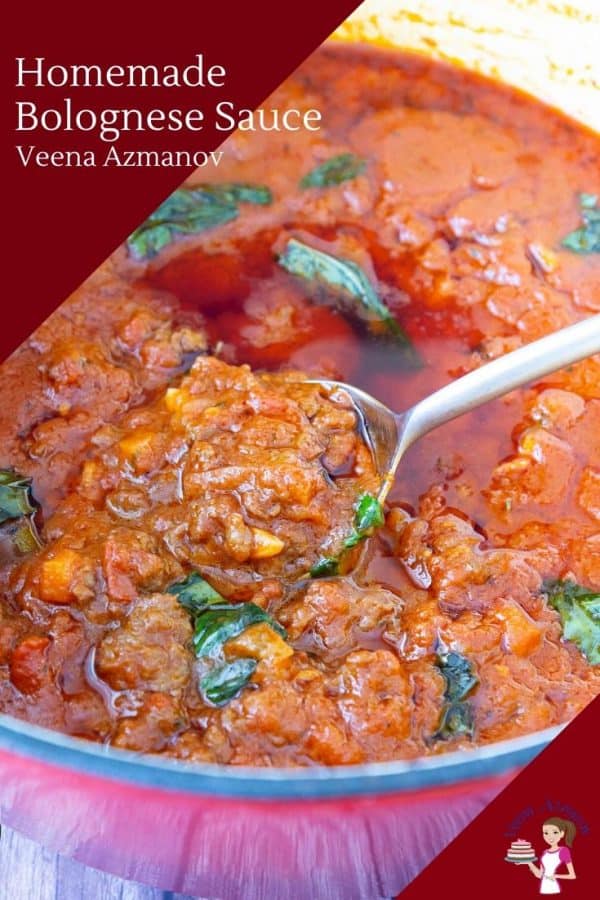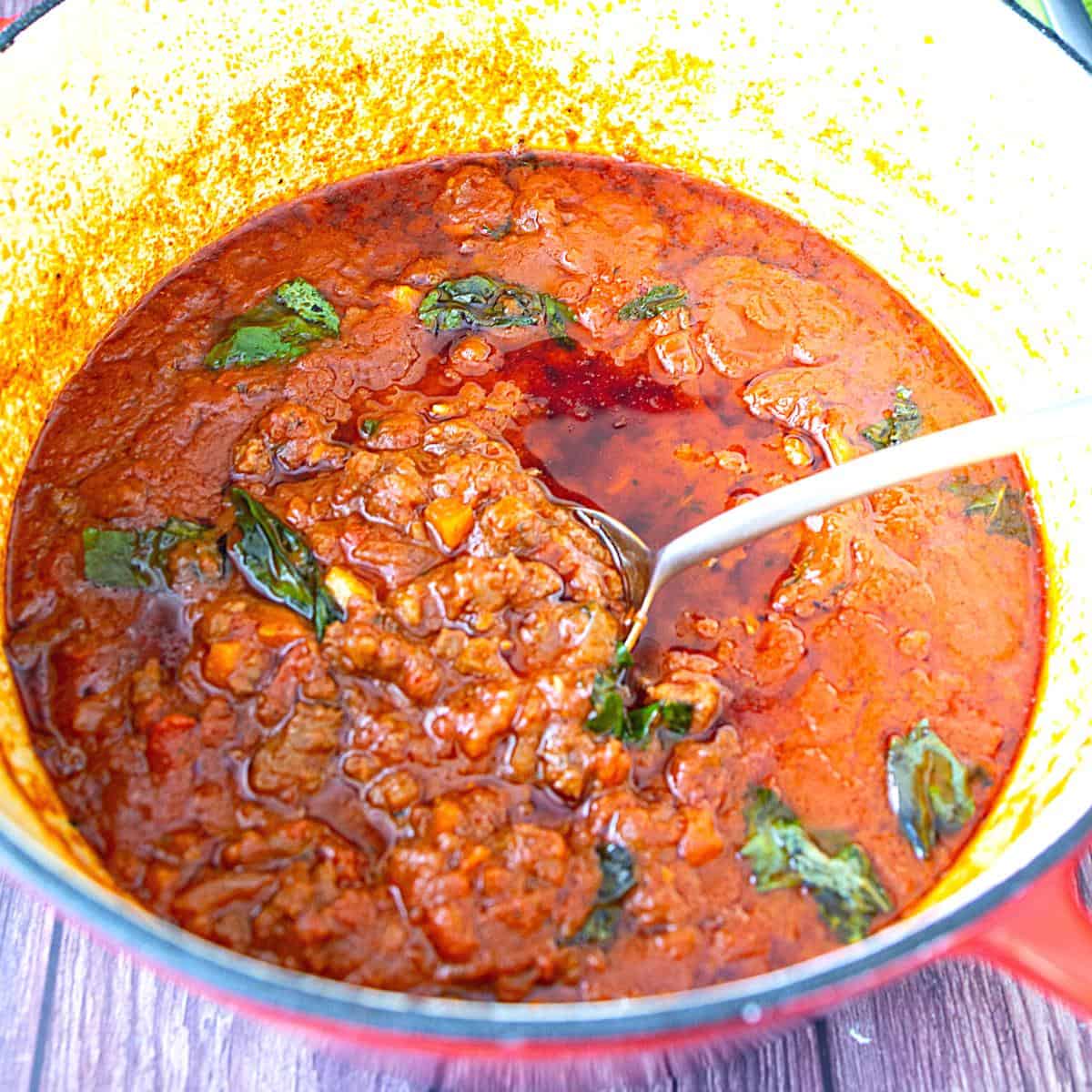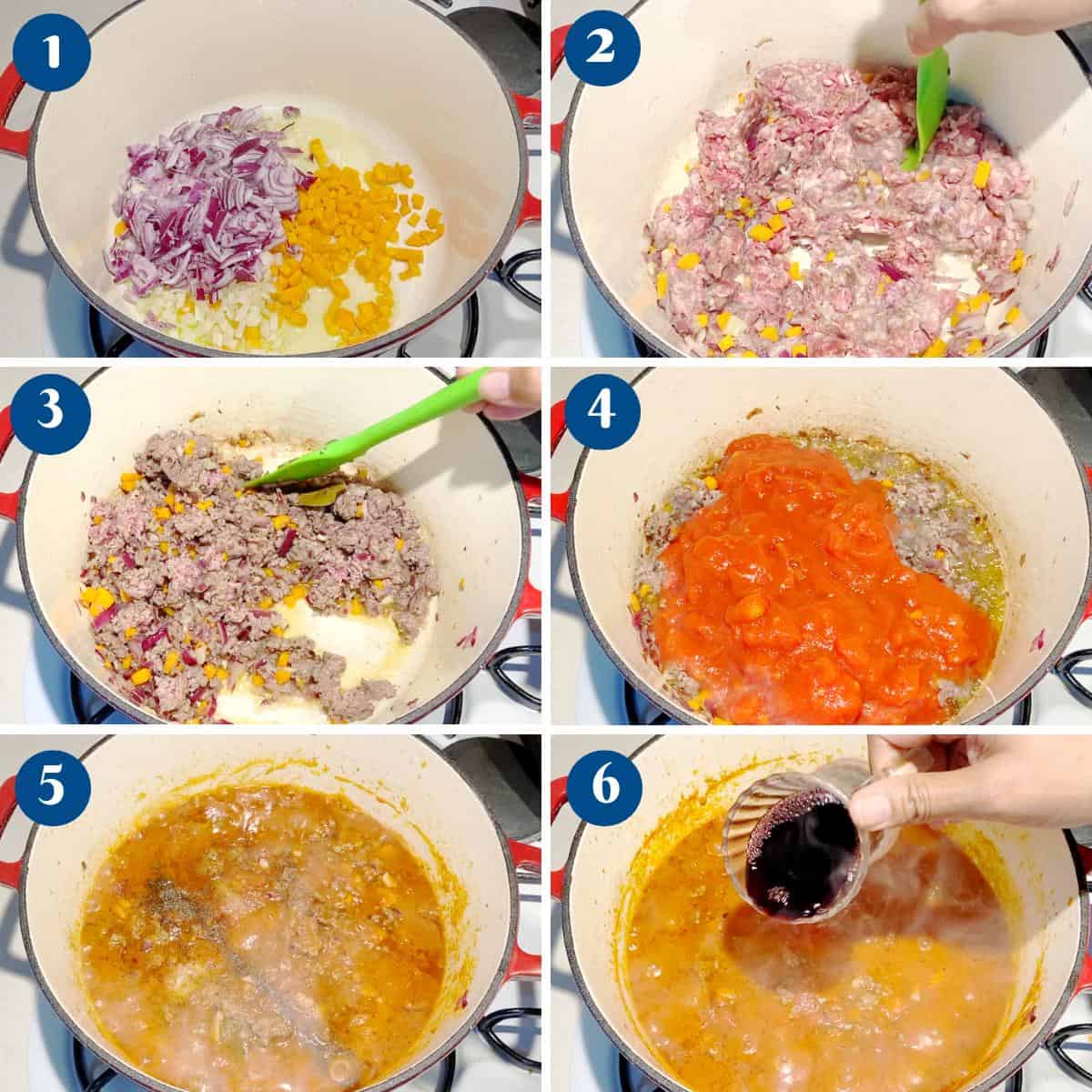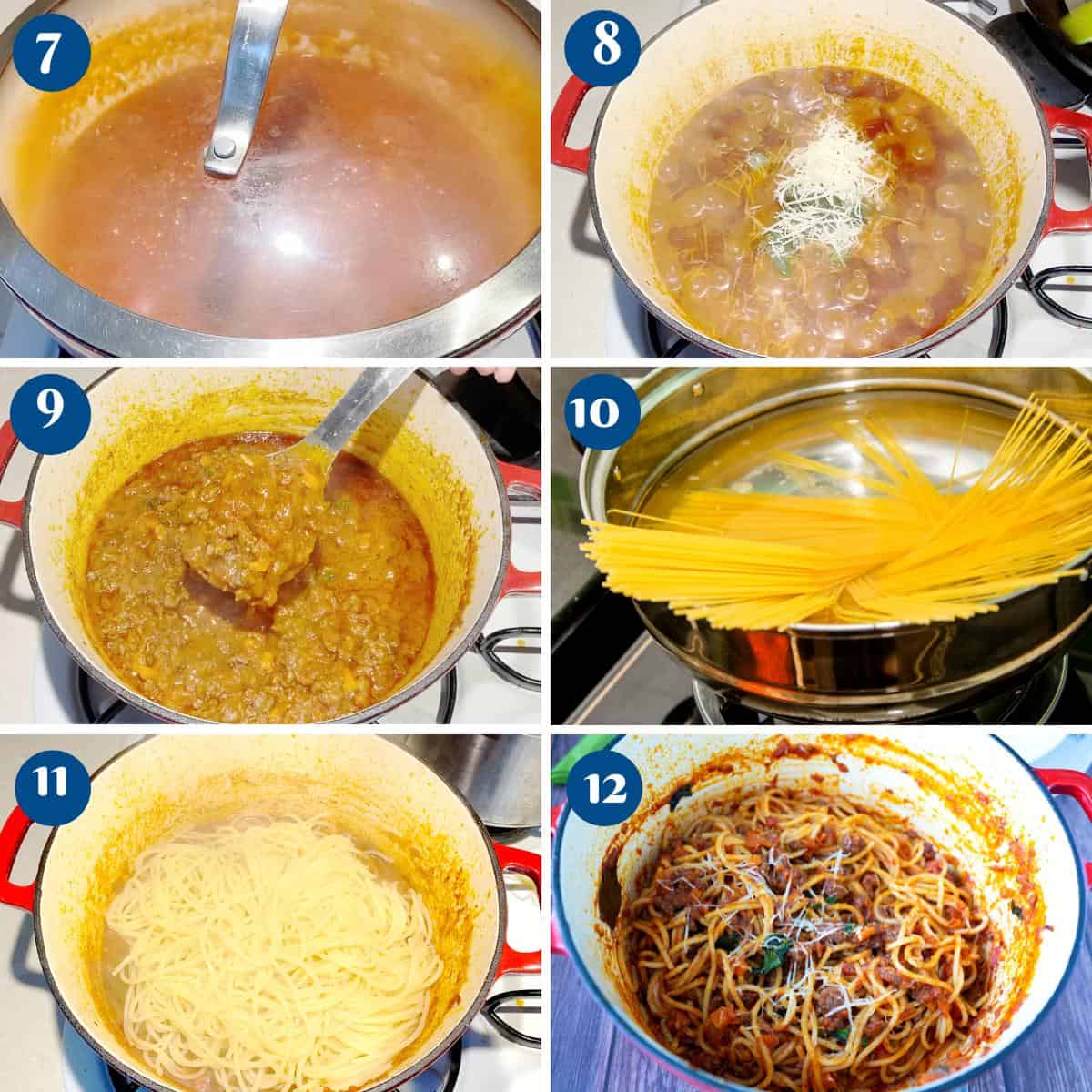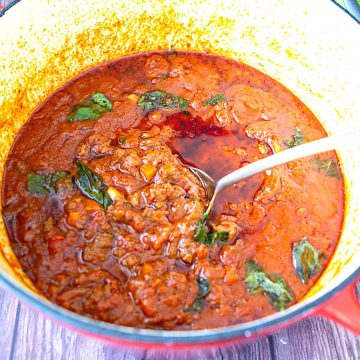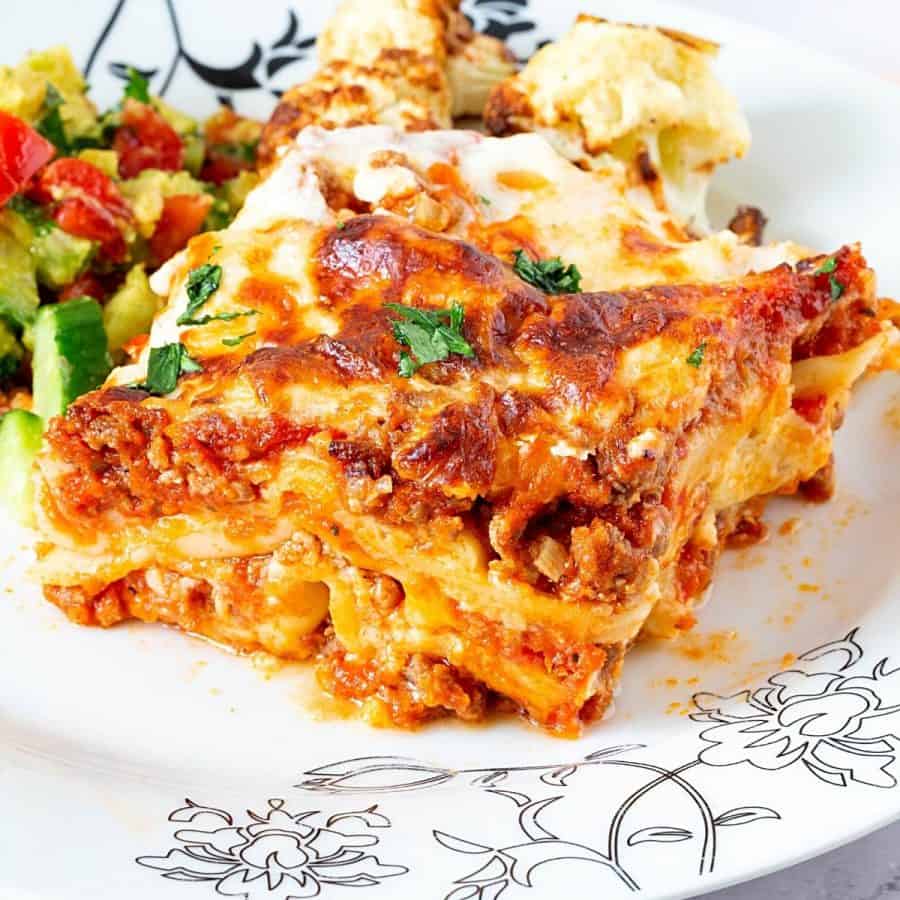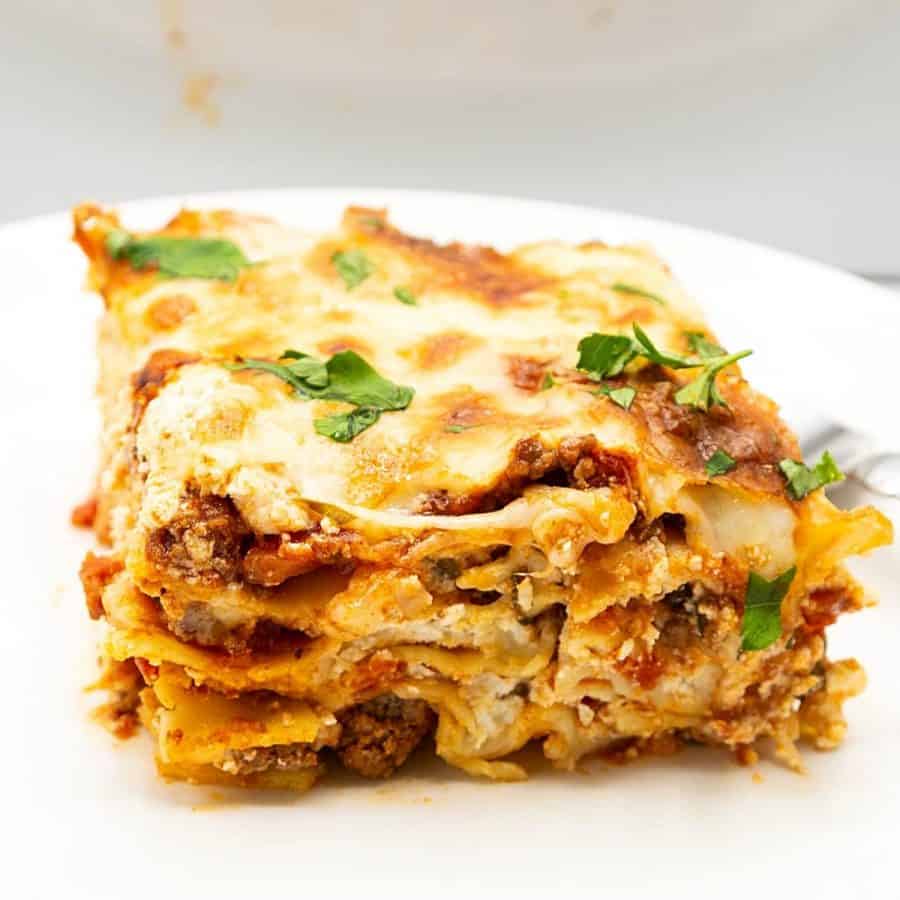Bolognese sauce, often hailed as the soul of Italian comfort cuisine, is a rich and savory masterpiece that hails from the historic city of Bologna. This luscious sauce, also known as “ragù alla bolognese,” is a tantalizing blend of finely minced meat, typically beef or a combination of meats, lovingly simmered with aromatic onions, carrots, celery, and tomatoes. The secret to its enchanting flavor lies in the slow-cooking process, allowing the ingredients to meld into a harmonious symphony of taste and texture. The resulting Bolognese sauce boasts a luxuriously thick and velvety consistency, coating each al dente pasta strand with an irresistible medley of flavors. Whether lavishly spooned over a plate of spaghetti, nestled within layers of lasagna, or used as a base for countless culinary creations, Bolognese sauce has earned its place as an enduring classic that invites warmth, comfort, and an invitation to savor the culinary heritage of Italy. With every delicious bite, it transports taste buds on a journey through the heart of Italian cuisine, leaving an indelible mark of culinary satisfaction.
Step-by-step: Best recipe for bolognese sauce
Sauté – In a Dutch oven or heavy bottom saute pan, add olive oil. Sauté garlic, carrots, celery, and onions until translucent. Brown – Then, add ground beef and pork. Break apart the beef into smaller pieces with a wooden spoon. Sauté until you see no more pink meat. Add the Italian seasoning and bay leaves – continue to cook on medium heat and break the meat apart.Pro tip – Browning the meat will add a nice caramelization and flavor to the sauce.
Sauce – Then, add the canned tomatoes and tomato paste. Season with salt and pepper. Followed by the wine – cook on medium-high heat for 2 minutes. Then, add beef broth or water, fresh thyme, and basil. Add the parmesan cheese.Pro tip – alternatively, you can use fresh chopped tomatoes and simmer them for at least an hour until cooked through and reduced before you add the Parmesan cheese. Simmer – Cover and cook for an hour on low heat stirring every 15 minutes. Adding broth or water if necessary to prevent it from sticking to the bottom of the pan. Taste and adjust seasoning.Pro tip – Keep the heat to a low simmer and stir occasionally to prevent it from getting burnt on the bottom. Optional – If using milk, add the milk now add turn the heat off. Give it a good stir until you are ready for the pasta.Pro tip – do not boil the sauce once you add the milk as the acid in the tomatoes can cause the milk to split.
Pasta – While the sauce is simmering bring a large pot of water to a boil with salt. Add spaghetti and cook for 10 minutes or until al dente. Drain and drop into the prepared sauce. Coat well and garnish with fresh chopped parsley and basil.Pro tip – Alternatively, you can serve the sauce in individual pates over hot pasta.
Troubleshooting
Sauce Too Thin: If your sauce is too thin, simmer it uncovered for a longer period to reduce and thicken it. Alternatively, add a small amount of tomato paste or a slurry (cornstarch mixed with cold water) to thicken the sauce. Sauce Too Thick: If your sauce becomes overly thick, add more stock, wine, or water to achieve the desired consistency. Lacks Flavor: If your Bolognese sauce needs more flavor, consider adding more herbs, spices, or a splash of wine. Adjust the salt and pepper to taste. Allow it to simmer longer to develop a more robust flavor profile. Overcooked Pasta: Overcooked pasta can become mushy and unappetizing. Be vigilant and follow the cooking time recommended on the pasta package. To salvage overcooked pasta, rinse it with cold water to stop the cooking process and then reheat it briefly in the sauce. Meat is Tough or Dry: If your ground meat turns out tough or dry, it may have been overcooked. Make sure to brown the meat without overcooking it initially. Using high-fat ground meat or adding olive oil can help keep the meat moist. Too Salty: If your Bolognese sauce becomes too salty, try diluting it by adding more unsalted tomato sauce or diced tomatoes. Adding sugar or cream to mellow the flavor can also balance the saltiness. Vegetables Not Softened: If the onions, garlic, or carrots in your sauce are not softened enough, continue cooking until they reach the desired tenderness. Adding a small amount of water or stock and covering the pan can help soften the vegetables faster. Sauce Separation: If your sauce separates or appears oily, it might be due to excessive fat content. Try skimming off excess fat from the sauce or using leaner ground meat. Burnt Bits on the Bottom: If the sauce or meat has stuck to the bottom of the pan and become burnt, carefully transfer the sauce to another clean pot, leaving the burnt bits behind. Be cautious not to scrape the burnt parts into your sauce. Experiment and Adapt: Don’t be discouraged by minor setbacks. Cooking is an art, and it often involves some trial and error. Adjustments can be made to correct issues and fine-tune the recipe to your liking.
Frequently asked questions
Creative variations
Mushroom and Lentil Bolognese: Replace some or all of the meat with finely chopped mushrooms and cooked lentils. The mushrooms add a meaty texture, while the lentils provide protein and a hearty bite. Seafood Bolognese: Substitute ground meat with a medley of seafood like shrimp, mussels, and diced fish. Create a seafood-rich tomato sauce with a hint of white wine and seafood stock for a delicious twist. Vegetarian/Vegan Bolognese: Skip the meat altogether and create a rich and flavorful sauce with a combination of vegetables, such as mushrooms, eggplant, zucchini, and carrots. Use plant-based protein like lentils, tofu, or tempeh for added texture. Spicy Bolognese: Add some heat with crushed red pepper flakes, chili powder, or hot sauce. The spiciness will give it an exciting kick. Pesto Bolognese: Mix in some fresh homemade or store-bought pesto sauce into your Bolognese for a vibrant and herbaceous flavor. Garnish with pine nuts and fresh basil for extra flair. Smoky Bacon Bolognese: Incorporate smoky bacon or pancetta for a deep, savory, and smoky flavor. Render the bacon fat and use it as the base for your sauce. Spinach and Ricotta-Stuffed Pasta: Instead of plain spaghetti, stuff jumbo pasta shells or manicotti with a mixture of spinach and ricotta cheese. Serve them with a tomato-based Bolognese sauce on top.
Thank you for sharing - Save for later

